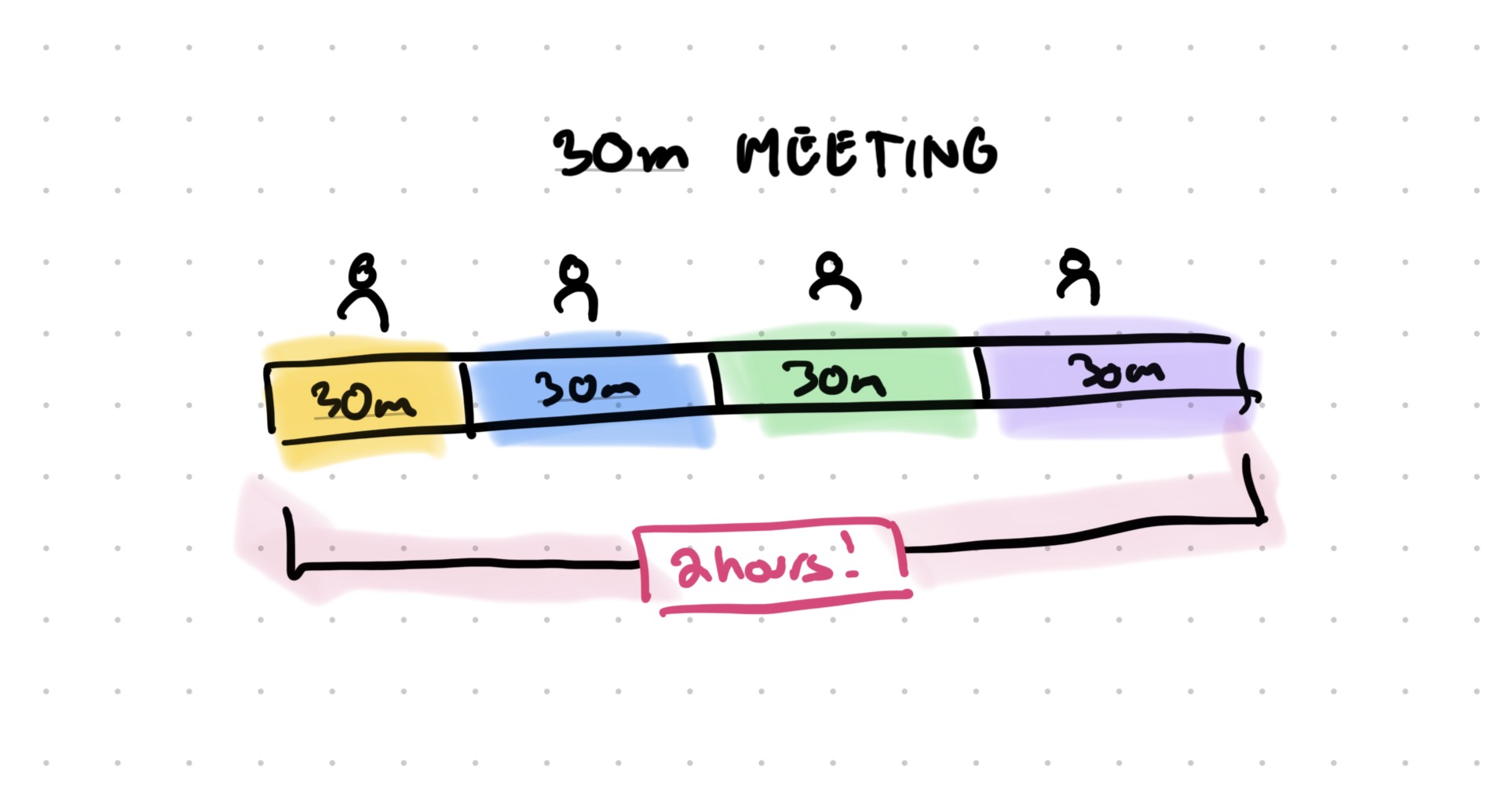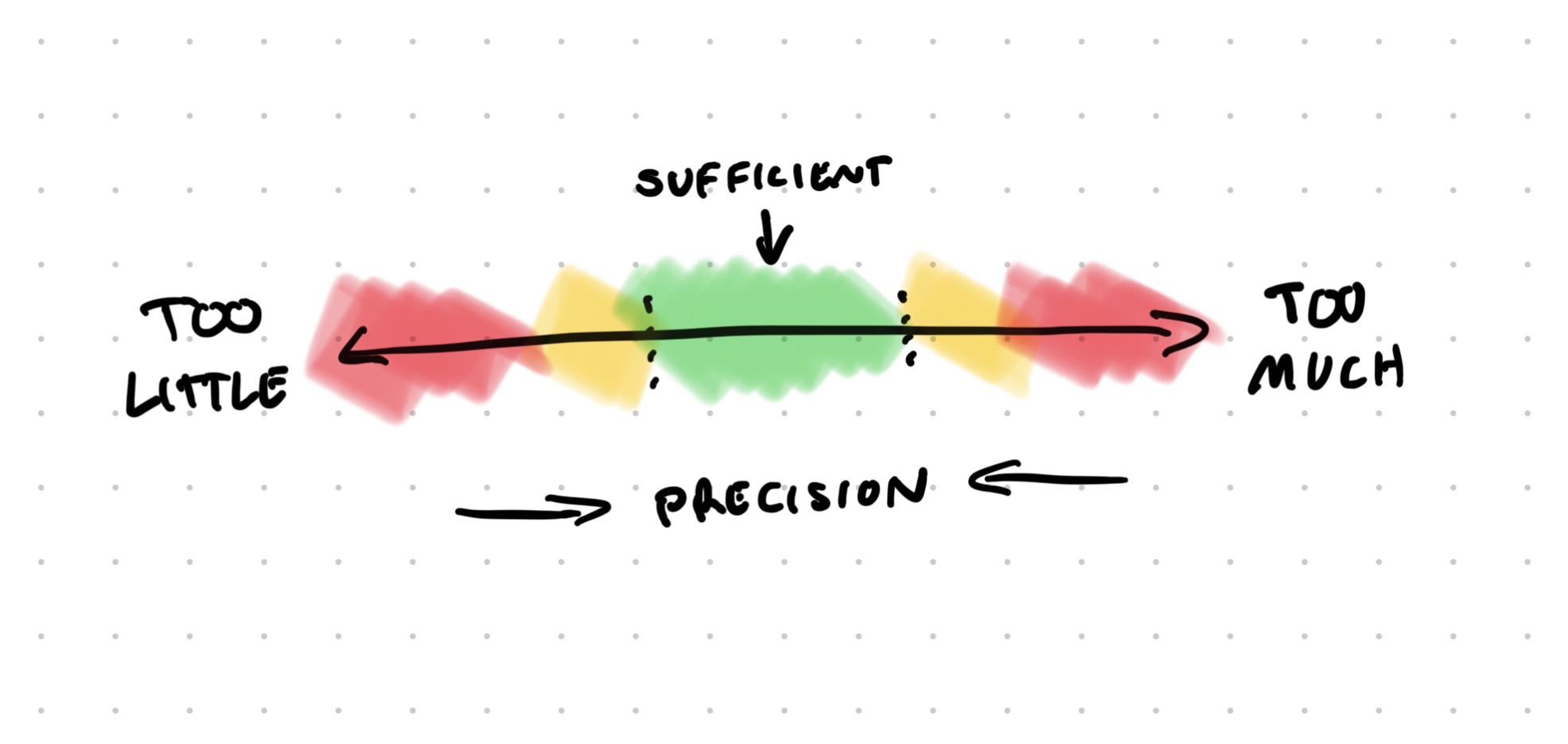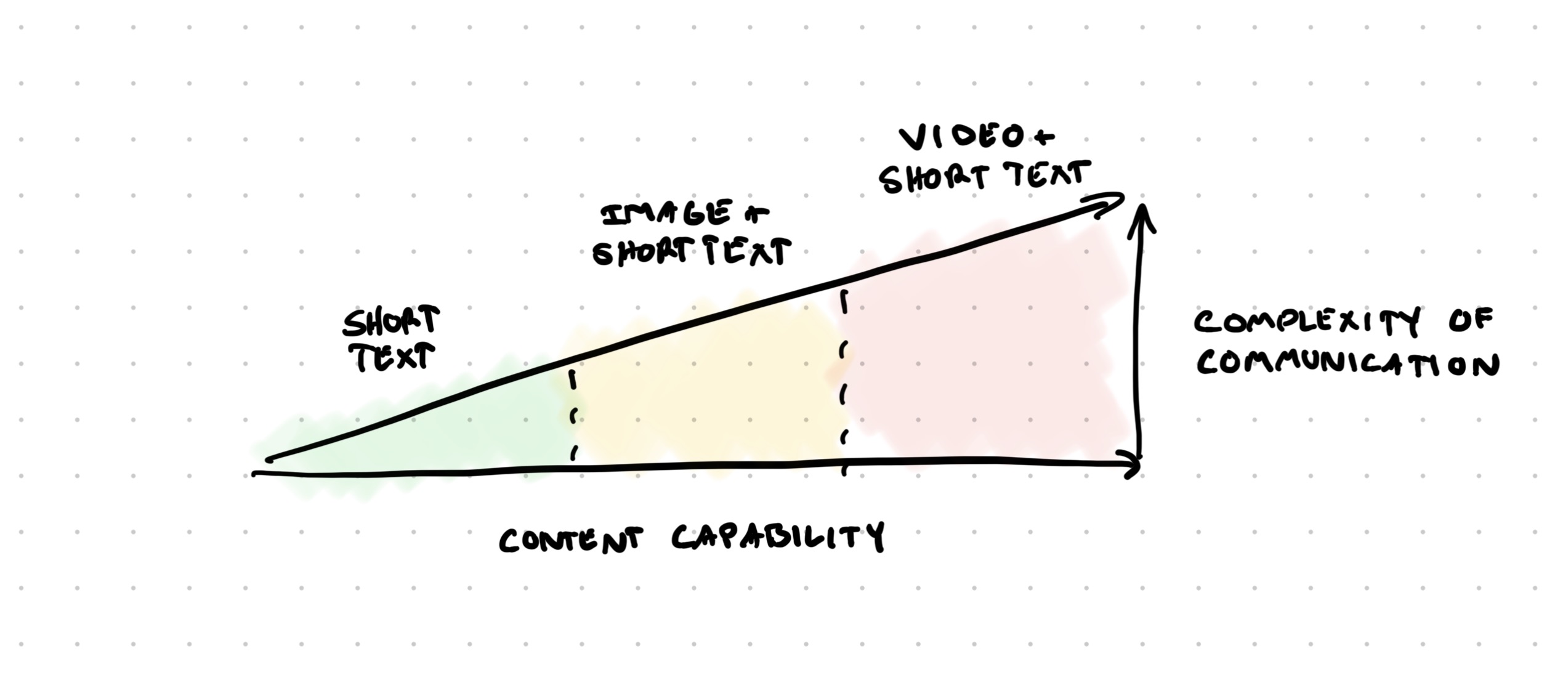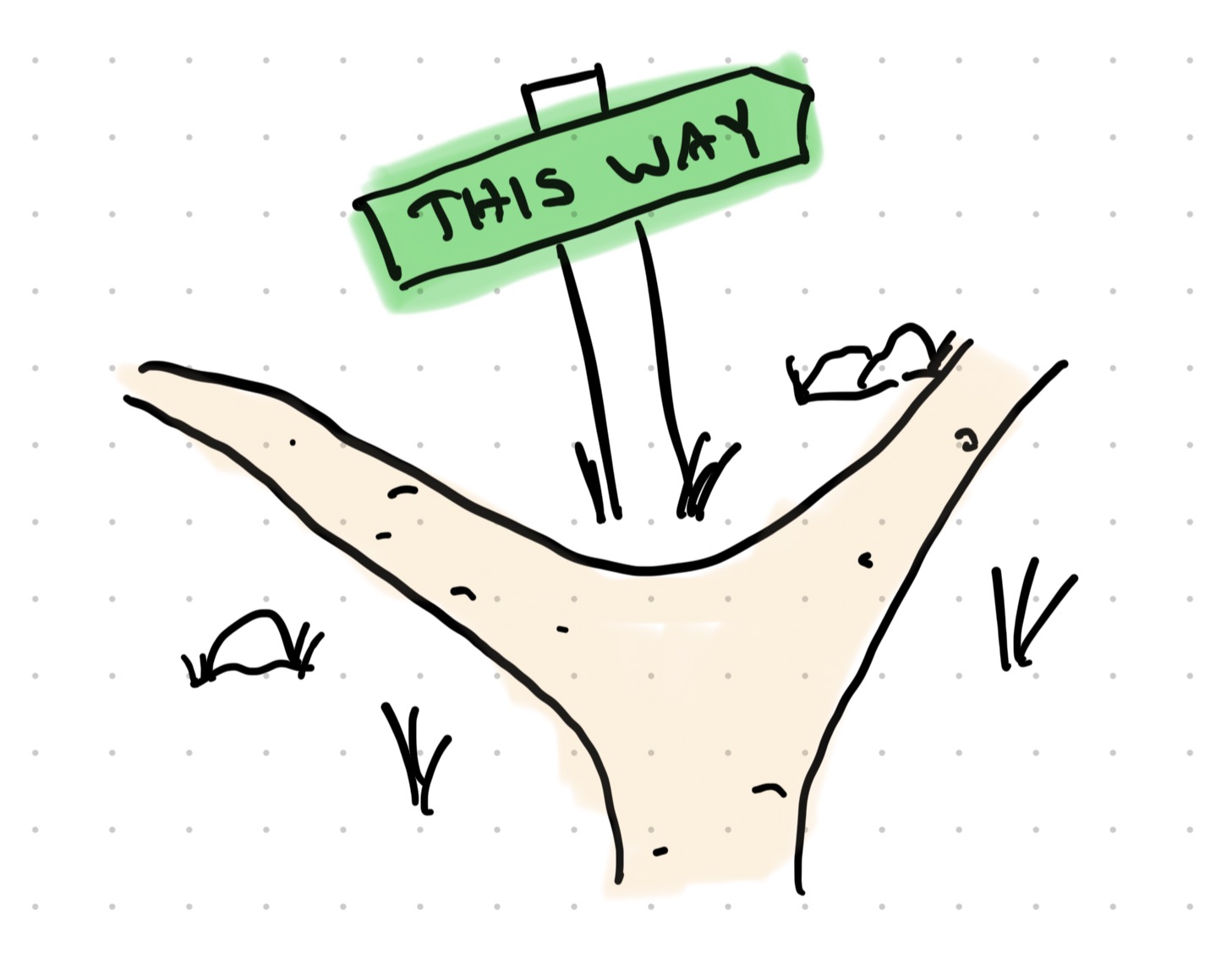A few weekends ago, I went camping with my family. We hiked a trail I'd never been on before, winding through dense woods, over rocky terrain, with plenty of spots where the path wasn't immediately obvious.
But we never got lost. Why? Trail markers.
Every time we hit a fork in the trail, there it was: a small colored symbol on a wooden post pointing the way. We'd see it and it grounded us to where we were. So we’d keep moving confidently through the fork, knowing where we were going.
The markers didn't tell us exactly where to step or how fast to walk. They didn't undermine the joy of hiking. They just gave us enough direction to keep going. They gave us clarity. And that was enough.
The joy of hiking isn't standing at crossroads (although there is adventure in that). The joy is moving along the journey. The trail markers enable that movement. They give you just enough clarity to make a decision and keep your momentum going.
Turns out, this is exactly what your team needs from you. Clarity to make decisions, to keep moving on the journey.

Imagine someone on your team hits a decision point. They're stuck. They need clarity on direction. So what happens? Someone fires off a message: "Can we sync on this?" They play calendar Tetris, scrambling to find 30 minutes when everyone's available. Finally, days later, everyone gets in a room and answers one question that could've been answered days ago.
Not only did you wait, you spent a lot of time. 6 people x 30 minutes each = 3 hours of collective time to answer a single question.
There's a better way. One person. One moment. Everyone moves forward. This is the power of the micro moment. It's the trail marker that keeps your team moving along the journey.
The Expense of Coordination
Meetings multiply time in ways we don't usually account for. In the interest of being fair, we try to include all the people that might be impacted by a decision. But, when you schedule 30 minutes with six people, you're not spending 30 minutes. You're spending three hours of combined human attention. Add in context switching, calendar disruption, and the mental load of "I have a meeting in 20 minutes so I can't start anything deep," and the real cost is even higher.
But the cost isn't just time. It's also momentum, which may be even worse. Every meeting is a speed bump. Every unclear message is a roadblock. Your team wants to move. They're capable of moving. But they're stuck waiting on everyone being available and ready at the same time.
It’s possible we tend to favor meetings because async communication so often fails us and it takes a lot of work. Someone sends a vague message. Three people interpret it three different ways. Someone asks a clarifying question. Radio silence for hours or days. Eventually, someone says "let's jump on a call" because it's “faster” than untangling the confusion by talking through it live. It’s an attempt to command everyone’s attention at the same time to brute force the problem.
But, as you already know, that meeting doesn’t usually go the way you want. It’s rare to leave a meeting with a focused answer or direction. It usually leads to another meeting, follow-up emails, and pulling more people in.

We choose to meet together for a variety of reasons. Maybe it’s because we don’t trust async communication. And typically, we're right not to trust it. Most async communication is lazy, half-hearted, lacks context, and fails to be focused enough. We don’t take the time into crafting asynchronous comms because we’re trying to save time up front. And that’s lazy.
Lazy communication doesn't save time. It creates problems that take more time to untangle later.
The Micro Moment—Asynchronously Complete
Enter the “micro moment”. It’s a short, highly curated, precise moment of communication that unlocks the next step.
A micro moment isn't just short. It's sufficient. It contains everything someone needs to move forward without you being there. It's asynchronously complete. But, it only contains what’s needed. Nothing more. It’s the perfect balance of enough information to take the next step, without requiring excessive engagement.
Think of it like a trail marker. The marker doesn't tell you exactly where to step or how fast to walk. It just shows you the direction. And that's enough. You see it, you move, you make progress. You’re on to the next leg of the trail.
When you hand someone a micro moment, they should be able to take action immediately. Not "let me ask a few follow-up questions." Not "I think I know what you mean but I'm not sure." They should know exactly what to do next. You give them what they need to give you what you need.
This requires effort on your part. Real effort. You're doing the hard work of synthesis so they don't have to. You're walking the trail first, figuring out where the markers need to go, and placing them deliberately. You're investing 10 focused minutes so they don’t have to. You’re investing minutes now, to save hours later.
Doing this is practicing conservation of time. You trade your time for everyone else's time. And the payoff? Momentum. Your team moves faster. They stop waiting. They build. And, you just freed up everyone’s calendar creating more time for everyone.

But it requires discipline. You can't fire off the first thing that comes to mind. You can’t mental vomit every concern and fringe consideration. You have to resist the urge to be lazy. You have to care enough to make it clear. Because clarity doesn't happen by accident. It happens through ruthless attention and refinement.
You might react negatively to this idea, having to put work into your communication. But when you do, you become a super force for good. And plus, this is your job.
The 3 Skills of Keeping People Moving
If you want to get good at micro moments there are three skills you need to develop: outcome focus, medium choice, and ruthless editing.
Outcome Focus
Before you communicate anything, ask yourself: what needs to happen next? Not "what do I want to say," but "what does this person need to be able to do?"
This is harder than it sounds. Most of us communicate to share information. But micro moments aren't about information transfer. They're about enabling action. If someone can't take a clear next step after your micro moment, you missed the opportunity.
You need to know your audience, put yourself in their shoes, and understand what they need so they can unlock the next step for you and your team. This keeps you focused on the outcome while collaborating with other people efficiently.
Medium Choice
You regularly consume different formats and media types all day long. A picture is worth a thousand words. A 30-second video clarifies faster than three paragraphs. But choosing the right medium isn't just about what you're comfortable with or used to. It's about what works best for this specific situation.
Text works when
- The context is straightforward and well known between you and the other person
- You’re priming or setting up a future conversation
- Content length can be controlled to be short and to the point
Three clear sentences beat three rambling paragraphs. Also, consider bullet points for listing criteria, individual pieces, or steps.
Visuals work when:
- It’s tough to describe in words
- You need to show spatial relationships or structure
- You want to give inspirational direction
- You're referencing something that already exists
But the level of fidelity matters. A pencil sketch says “I’m thinking out loud” and isn’t very sure. A polished wireframe can say “this is a final proposal” and I’m pretty sure about it. A screenshot with three red circles and annotations takes the context and says "look here, this is the specific thing."
Video works when:
- You need to show how something works, not just what it is
- Tone matters (reassurance, enthusiasm, urgency)
- You're walking through something complex that benefits from movement or rearranging objects
Keep it short. Nobody wants a 15-minute rambling video. Heck, they don’t want to watch any minutes of rambling. Keep it less than 5 minutes…maximum. And consider sharing it on a platform where it can be watched at 1.5x or 2x speed to save time.

How to choose your medium:
Ask yourself three questions:
- What's the quickest way for this person to understand this enough?
- Will they need to reference this later, or is this a one-time nudge?
- How much autonomy do I want to give them?
If you're not sure, default to the least amount of information that still enables action. You can always add more detail if they ask. But starting with too much information or too high fidelity can be its own blocker. And, consider pairing mediums together.
One more tip, if you’re referencing a document, resource, or destination—always provide a link. Don’t make people hunt for anything. Make it easy for them, without overwhelming them.
Ruthless Editing
You have to cut until only the essential remains. This is the hardest part, and where many people fail in their communication.
Every extra sentence is friction. Every detail is a place where someone might get confused or distracted. Your job is to give them only what they need and nothing more.
This doesn't mean being terse or cold. It means being precise. It means knowing the difference between context that clarifies and context that clutters.
Most of us over-explain. We add caveats and qualifications and "just to be clear" statements until the core message is buried. Resist that urge. Say what needs to be said, then stop.
Why? Because clarity is your job, not theirs. When you send quick, half-baked communication, you're outsourcing the work of making sense of it to everyone who reads it. That's not async communication. That's async confusion.
Do the math: 10 focused minutes for you versus their collective hour (or more) back and forth. That trade works every single time. Yes, it’s more work for you, but like we already said, it’s your job. Plus, you unlock momentum and your team moves faster.
For Leaders: The Art of Just-Fuzzy-Enough
If you're a design leader, micro moments become even more powerful…and more complex. You're communicating in two directions: to other leaders and to your team. Both need clarity, but different kinds.
With other leaders, speak their language. Product leaders care about outcomes and timelines. Engineering leaders care about feasibility. Executives care about business impact.
Your job isn't to wax poetic about design thinking. It's to translate design direction and decisions into their frame of reference—quickly.
Example: Your product partner asks about a proposed feature. Instead of scheduling a 30-minute meeting to walkthrough the research findings and present the solution, you send a 60-second video: "We tested this with 12 users. Nine got confused at this step. If we shift the CTA here and revise the content, we remove that friction. Adds about a week to timeline but should improve conversion by 15-20%."
That's it. Problem, solution, trade-off, impact. They can decide. You can move.
With your team, you can't back-seat drive the pixels. That's micromanagement. On the flip side you can't be so vague that people don't know where to go. "Make it better" isn't a micro moment. It’s frustratingly unclear.
The leader's micro moment to their team lives in a sweet spot: just-fuzzy-enough.
Example: You draw a quick, messy diagram on your iPad. Three boxes, some arrows, a couple of annotations. You type out a short message to send along with it: "We need to prioritize the submit function because of the user's mental model. I'm not sure exactly how to solve it, but consider how to leverage visual hierarchy or positioning to make it stand out.”
You've given structure without suffocation. Direction without prescription. Your team knows what the goal is, but they decide the path.
Start Tomorrow
Remember those trail markers? They provide clear direction at a point of choice. That’s exactly what a micro moment does. So, the next time someone on your team gets stuck at a fork in the trail, resist the urge to schedule a meeting. Instead, spend 10 minutes in clarity. It’s an investment that pays back hours.

Ask yourself: What does this person need to be able to do next? What's the minimum information to enable that action?
Consider your medium. Is this a focused, two-sentence Slack message? A quick sketch with 3 bullet points? A 30-second screen recording with a link? Pick the one that makes it quick and easy for the other person to understand.
Then edit ruthlessly. Cut everything that isn't essential. Fight the urge to add “just a little more”. Say what needs to be said, then stop. Don’t overthink it. Hit send. Watch what happens.
If you did it right, you’ll unlock the next step. They won't ask 15 follow-up questions. They won't wait for a meeting. You’ll just get moving again.
This isn't magic. It's just disciplined communication. It’s clarity at work.
So, start creating those trail markers. Be clear. Be intentional. Give your team what they need to keep moving. Because the joy isn't in standing at the crossroads debating. It's in the movement. And micro moments are what enable that movement to happen.